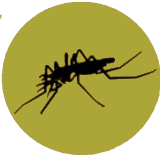Submicroscopic malaria infection is not associated with fever in cross-sectional studies in Malawi
Malaria knowledge and experiences with community health workers among recently pregnant women in Malawi
The World Health Organization recommends three or more doses of intermittent preventive treatment in pregnancy with sulfadoxine-pyrimethamine (IPTp-SP) to mitigate the negative effects of malaria in pregnancy (MIP)
Systematic review of statistical methods for safety data in malaria chemoprevention in pregnancy trials
Drug safety assessments in clinical trials present unique analytical challenges. Some of these include adjusting for individual follow-up time, repeated measurements of multiple outcomes and missing data among others.
An Epidemiological Profile of Malaria and its Control in Malawi
1. Introduction
As one of the poorest countries in the world, Malawi suffers from a disproportionate burden of infectious diseases, particularly malaria. Every Malawian resident lives in a region of high malaria transmission, defined as greater than one case per 1,000 residents. In 2008, in a country with a population just under 14 million, the World Health Organization reported there were an estimated 5 million cases of malaria illness. Illnesses classified as malaria represent one half of all outpatient consultations that occur in the country (World Health Organization 2010). Since the adoption of the recent strategic plan in 2005, Malawi dramatically scaled up malaria control measures focusing on vector control, case management and protection of vulnerable groups including pregnant women and infants.
Uptake of these interventions has generally been successful, although they have been implemented heterogeneously throughout the country. To date, there has not been a systematic evaluation of their impact on malaria disease burden and transmission intensity. The goal of this review is to summarize what is known about the burden of malaria and the strategies being implemented to control malaria in Malawi. We aim to describe the context in which the activities of Malawi’s International Center for Excellence in Malaria Research (ICEMR) activities will be carried out, provide the rationale for the studies being proposed and to highlight how the ICEMR research activities will enhance our understanding of the disease and improve the effectiveness of interventions..
1.1. Risk and burden of malaria in Malawi Environmental factors. Recent surveys suggest that malaria infection risk exists throughout Malawi, with the highest risk being along hotter, wetter and more humid low-lying regions (lakeshore, Shire River valley and central plain areas), and the lowest in the highland areas of Rumphi, Mzimba, Chitipa and the Kirk range (Kazembe, Kleinschmidt 2006). Although the disease is widely endemic and stable in Malawi, transmission patterns show substantial seasonal variation, determined largely by the annual rains that typically begin in November- December and last through March-April in most parts of the country.
1.1.1. Vector ecology—Few studies on the malaria vectors of Malawi and dynamics of transmission have been published. The two most comprehensive studies occurred 10–15 years ago although published several years later, by Hawley (Hawley 2002) and Spiers (Spiers, Mzilahowa 2002). The principal vectors identified were An. arabiensis, An. funestus, An. gambiae s.s. and An. Fuadriannulatus (a member of the An. gambiae s.l. species complex but not a malaria vector) . Spillings et al. (Spillings, Brooke 2009) documented a new and as yet un-named member of the Anopheles funestus species group from the Karonga area of northern Malawi. The significance of this finding to human
malaria is uncertain as none of the 63 females collected were positive for sporozoite infection .The malaria sporozoite infection rates ranged from 2–5 % and most blood meals were identified as emanating from the human host. The number of infective bites per person per year ranged from 16 to 27 infective bites/person/year in Mangochi (Hawley 2002). Since Hawley conducted the study during a drought (rainfall was approximately 60% of normal), it is possible that estimates of transmission intensity in years of normal precipitation would be higher.
Studies on insecticide resistance status of anopheline vectors of malaria in Malawi are few but highly relevant to the implementation of anti-vector measures such as insecticide treated bed nets and indoor residual spraying. In 2002, Mzilahowa and colleagues conducted bioassays which demonstrated that An. arabiensis and An. Quadriannulatus were susceptible to pyrethroids and organophosphate but exhibited reduced susceptibility to DDT (Mzilahowa, Ball 2008). Mathanga et al. Page 2 Acta Trop. Author manuscript; available in PMC 2013 June 13.
The effectiveness of older insecticide-treated bed nets (ITNs) to prevent malaria infection in an area of moderate pyrethroid resistance: results from a cohort study in Malawi
A previous cohort study in Malawi showed that users of new insecticide-treated bed nets (ITNs) were significantly protected against malaria compared to non-users, despite moderate levels of pyrethroid resistance among the primary mosquito vectors.

